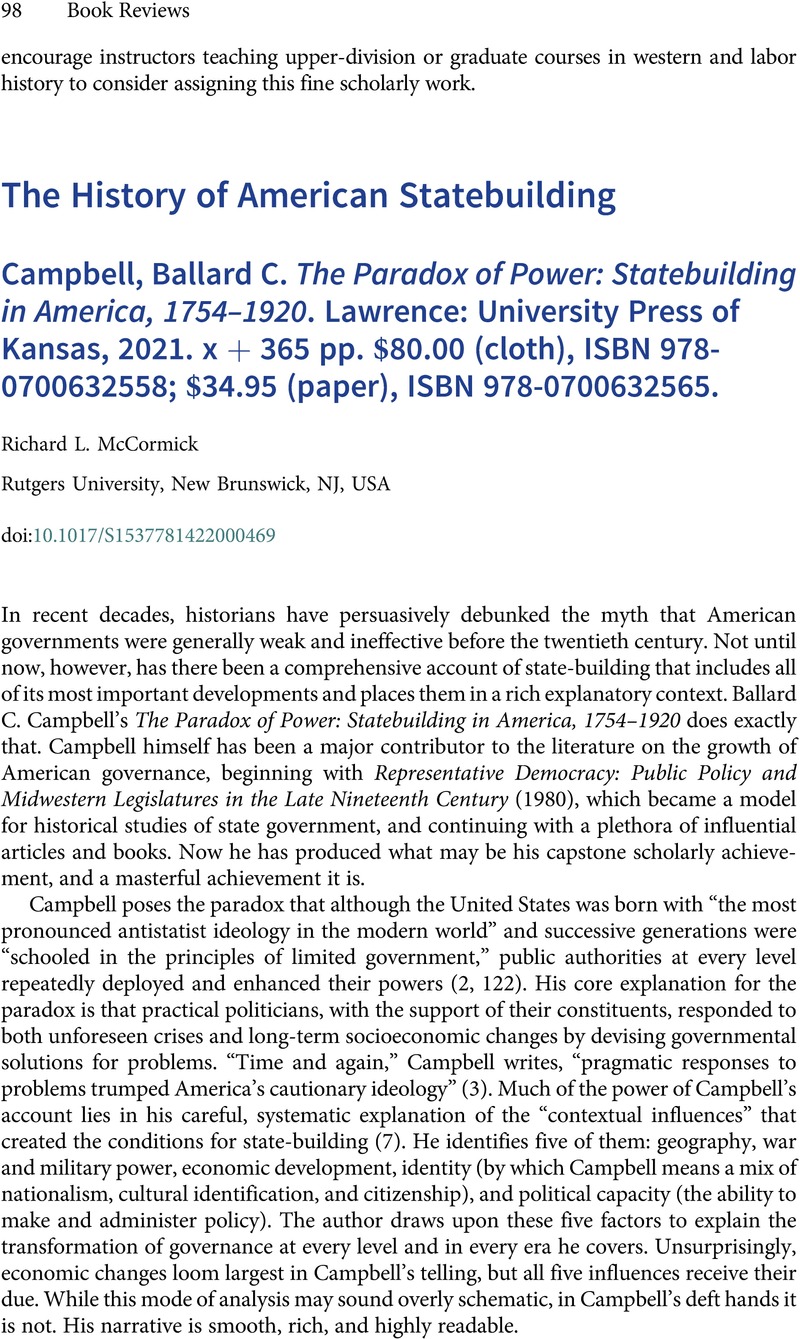No CrossRef data available.
Article contents
The History of American Statebuilding - Ballard C. Campbell The Paradox of Power: Statebuilding in America, 1754–1920. Lawrence: University Press of Kansas, 2021. x + 365 pp. $80.00 (cloth), ISBN 978-0700632558; $34.95 (paper), ISBN 978-0700632565.
Review products
Ballard C. Campbell The Paradox of Power: Statebuilding in America, 1754–1920. Lawrence: University Press of Kansas, 2021. x + 365 pp. $80.00 (cloth), ISBN 978-0700632558; $34.95 (paper), ISBN 978-0700632565.
Published online by Cambridge University Press: 06 January 2023
Abstract
An abstract is not available for this content so a preview has been provided. Please use the Get access link above for information on how to access this content.

- Type
- Book Reviews
- Information
- The Journal of the Gilded Age and Progressive Era , Volume 22 , Issue 1 , January 2023 , pp. 98 - 100
- Copyright
- © The Author(s), 2023. Published by Cambridge University Press on behalf of the Society for Historians of the Gilded Age and Progressive Era (SHGAPE)


